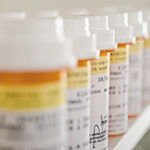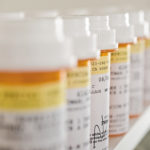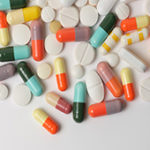The European Commission Proposes to Extend the Transition Deadline in the EU Medical Device Regulation
 … a major change to the Regulation is needed to prevent shortages of life-saving medical devices…
… a major change to the Regulation is needed to prevent shortages of life-saving medical devices…
Background
On Friday 9 December 2022, the European Commission proposed to extend the transition deadline in the Medical Device Regulation (EU) 2017/745 (MDR). According to the European Commissioner for Health and Food Safety, Stella Kyriakides, a major change to the Regulation is needed to prevent shortages of life-saving medical devices, from implants and prosthetics to ventilators and pacemakers.
Medical devices in the EU are regulated under the MDR, and the MDR replaced the previous Medical Devices Directive 93/42/EEC (MDD) and the Active Implantable Medical Devices Directive 90/385/EEC (AIMDD) on 26 May 2021. Currently, medical devices can be placed on the EU market under a CE mark certificate issued under the MDD or AIMDD until 26 May 2024 (Transition Deadline). After the Transition Deadline, these products will require a CE mark certificate issued under the MDR so that they remain available on the EU market – a potentially costly and time-consuming process.
A broad range of stakeholders in the medtech sector consider the Transition Deadline to be unattainable. The pandemic, shortages of raw materials caused by the conflict in Ukraine and low Notified Body capacity have collectively put a strain on the ability for medical device manufacturers to meet the Transition Deadline. Without an extension to the Transition Deadline, it is anticipated that a significant number of medical device manufacturers would need to take their products off the EU market due to an inability to comply with the new requirements under the MDR within the required timeline.
Key Proposals
The European Commission has proposed the following legislative amendments:
- Extension of the Transition Deadline in the MDR based on the risk class of each device:
- 26 May 2027 for Class III and Class IIb medical devices; and
- 26 May 2028 for Class IIa and Class I medical devices.
- Extension of the validity of CE mark certificates issued under the MDD and AIMDD if needed for legal and practical reasons (e.g. to access markets outside of the EU that accept products with a CE mark), provided that:
- the device does not present an unacceptable risk to health and safety;
- the device has not undergone significant changes in design or intended purpose; and
- the manufacturer has already undertaken the necessary steps to launch the CE mark certification process under the MDR (e.g. lodged an MDR application with a Notified Body by 26 May 2024).
- Elimination of the “sell-off” date under the MDR and under the In Vitro Diagnostic Medical Device Regulation (EU) 2017/746 (IVDR) to avoid safe medical devices and in vitro diagnostics (e.g. blood glucose meters) that are already on the EU market from having to be discarded by 27 May 2025.
Next Steps
The European Commission intends to provide these legislative amendments to the EU legislature for consideration at the beginning of 2023.
The European Commission also intends to undertake a comprehensive evaluation of the MDR by May 2027. The purpose of the evaluation is to identify structural problems with the MDR and potential medium and long-term solutions to these concerns.
As a final note, except for the elimination of the “sell-off” date, none of the proposed legislative amendments applies to in vitro diagnostics. Given that there are still few Notified Bodies under the IVDR, similar amendments might also be required for in vitro diagnostics in the near future.

 The U.S. Patent and Trademark Office (“USPTO”) published a Notice in the Federal Register announcing a new pilot program entitled, “Cancer Moonshot Expedited Examination Pilot Program” (the “Cancer Moonshot Program”) (87 Fed. Reg. 75608 (December 9, 2022)) (the “Notice”) to attempt to further accelerate innovation in the health and medical fields. Beginning on February 1, 2023, this new program will replace the Cancer Immunotherapy Pilot Program and expedite examination for a broader scope of technologies to prevent cancer and advance smoking cessation. The Cancer Moonshot Program is to support President Biden’s recently renewed Cancer Moonshot initiative, which set a new goal of reducing cancer death rate by at least 50% over the next 25 years.
The U.S. Patent and Trademark Office (“USPTO”) published a Notice in the Federal Register announcing a new pilot program entitled, “Cancer Moonshot Expedited Examination Pilot Program” (the “Cancer Moonshot Program”) (87 Fed. Reg. 75608 (December 9, 2022)) (the “Notice”) to attempt to further accelerate innovation in the health and medical fields. Beginning on February 1, 2023, this new program will replace the Cancer Immunotherapy Pilot Program and expedite examination for a broader scope of technologies to prevent cancer and advance smoking cessation. The Cancer Moonshot Program is to support President Biden’s recently renewed Cancer Moonshot initiative, which set a new goal of reducing cancer death rate by at least 50% over the next 25 years. After a recent reminder from the U.S. Patent and Trademark Office (USPTO) regarding the duties of disclosure and reasonable inquiry during examination of a patent application and a Request for Comments (RFC) on the USPTO initiatives to ensure “robustness and reliability” of patent rights,[1] the Director of the U.S. Patent and Trademark Office published a third notice in less than four months. The latest notice is in conjunction with the Food and Drug Administration (FDA) to further the discussion surrounding the patent practices of the pharmaceutical industry (
After a recent reminder from the U.S. Patent and Trademark Office (USPTO) regarding the duties of disclosure and reasonable inquiry during examination of a patent application and a Request for Comments (RFC) on the USPTO initiatives to ensure “robustness and reliability” of patent rights,[1] the Director of the U.S. Patent and Trademark Office published a third notice in less than four months. The latest notice is in conjunction with the Food and Drug Administration (FDA) to further the discussion surrounding the patent practices of the pharmaceutical industry ( When it comes to discussing medical devices regulated by the U.S. Food and Drug Administration (FDA), words such as “approved” and “cleared” cannot be used interchangeably as these terms carry a particular meaning. Similarly, creating an impression of approval of a device establishment or its devices because the establishment is registered with FDA also is prohibited. Long-standing regulatory provisions,
When it comes to discussing medical devices regulated by the U.S. Food and Drug Administration (FDA), words such as “approved” and “cleared” cannot be used interchangeably as these terms carry a particular meaning. Similarly, creating an impression of approval of a device establishment or its devices because the establishment is registered with FDA also is prohibited. Long-standing regulatory provisions,  The off-label use of ketamine to treat anxiety, depression, and other behavioral health disorders —coupled with the COVID-19 telehealth era—has spurred the opening of virtual ketamine clinics nationwide. Some clinics offer a full suite of health care services, including telehealth visits, prescribing, pharmacy dispensing, and counseling services, while others are focused on more niche areas like group coaching sessions. In the wake of public reports detailing investigations into a number of digital health companies prescribing controlled substances, it is more important than ever to ensure your business model complies with the various regimes regulating the use of ketamine to treat behavioral health issues.
The off-label use of ketamine to treat anxiety, depression, and other behavioral health disorders —coupled with the COVID-19 telehealth era—has spurred the opening of virtual ketamine clinics nationwide. Some clinics offer a full suite of health care services, including telehealth visits, prescribing, pharmacy dispensing, and counseling services, while others are focused on more niche areas like group coaching sessions. In the wake of public reports detailing investigations into a number of digital health companies prescribing controlled substances, it is more important than ever to ensure your business model complies with the various regimes regulating the use of ketamine to treat behavioral health issues. The U.S. Food and Drug Administration’s (“FDA” or “the Agency”) Center for Devices and Radiological Health (“CDRH”) recently announced the launch of its Total Product Life Cycle Advisory Program (“TAP”) Pilot. The first phase of this voluntary initiative, called TAP Pilot Soft Launch, will be conducted during fiscal year (“FY”) 2023 with enrollment beginning on January 1, 2023.
The U.S. Food and Drug Administration’s (“FDA” or “the Agency”) Center for Devices and Radiological Health (“CDRH”) recently announced the launch of its Total Product Life Cycle Advisory Program (“TAP”) Pilot. The first phase of this voluntary initiative, called TAP Pilot Soft Launch, will be conducted during fiscal year (“FY”) 2023 with enrollment beginning on January 1, 2023. On September 28, 2022, the U.S. Food and Drug Administration (“FDA” or “the Agency”) issued its long-awaited final guidance, “Clinical Decision Support Software” (the “CDS Guidance”). The CDS Guidance follows the Agency’s September 2019 draft guidance of the same name (the “Draft Guidance”) and seeks to clarify several key concepts for determining whether clinical decision support (“CDS”) software is a medical device.
On September 28, 2022, the U.S. Food and Drug Administration (“FDA” or “the Agency”) issued its long-awaited final guidance, “Clinical Decision Support Software” (the “CDS Guidance”). The CDS Guidance follows the Agency’s September 2019 draft guidance of the same name (the “Draft Guidance”) and seeks to clarify several key concepts for determining whether clinical decision support (“CDS”) software is a medical device. The new Director of the U.S. Patent and Trademark Office (USPTO), Katherine Vidal, published a stern reminder regarding the duties of disclosure and reasonable inquiry during examination of a patent application, including reexamination, reissue, and proceedings before the Patent Trial and Appeal Board (PTAB) (87 FR 45764 (July 29, 2022)). The justification was to provide examiners and judges with all the material information needed to decide on patentability of a claimed invention. According to the USPTO, more robust and reliable patents should result, which is better for the public.
The new Director of the U.S. Patent and Trademark Office (USPTO), Katherine Vidal, published a stern reminder regarding the duties of disclosure and reasonable inquiry during examination of a patent application, including reexamination, reissue, and proceedings before the Patent Trial and Appeal Board (PTAB) (87 FR 45764 (July 29, 2022)). The justification was to provide examiners and judges with all the material information needed to decide on patentability of a claimed invention. According to the USPTO, more robust and reliable patents should result, which is better for the public.  On August 16, President Biden signed the Inflation Reduction Act of 2022 into law,[
On August 16, President Biden signed the Inflation Reduction Act of 2022 into law,[